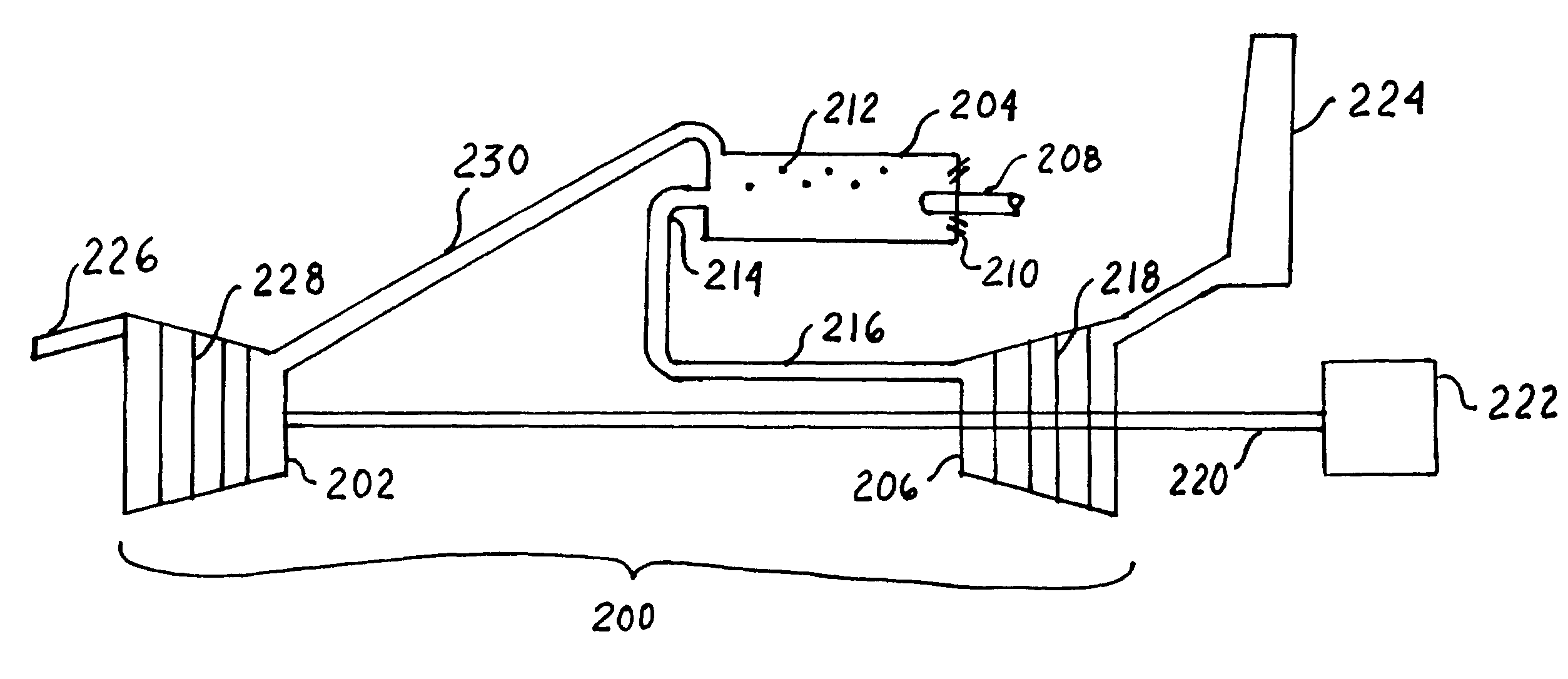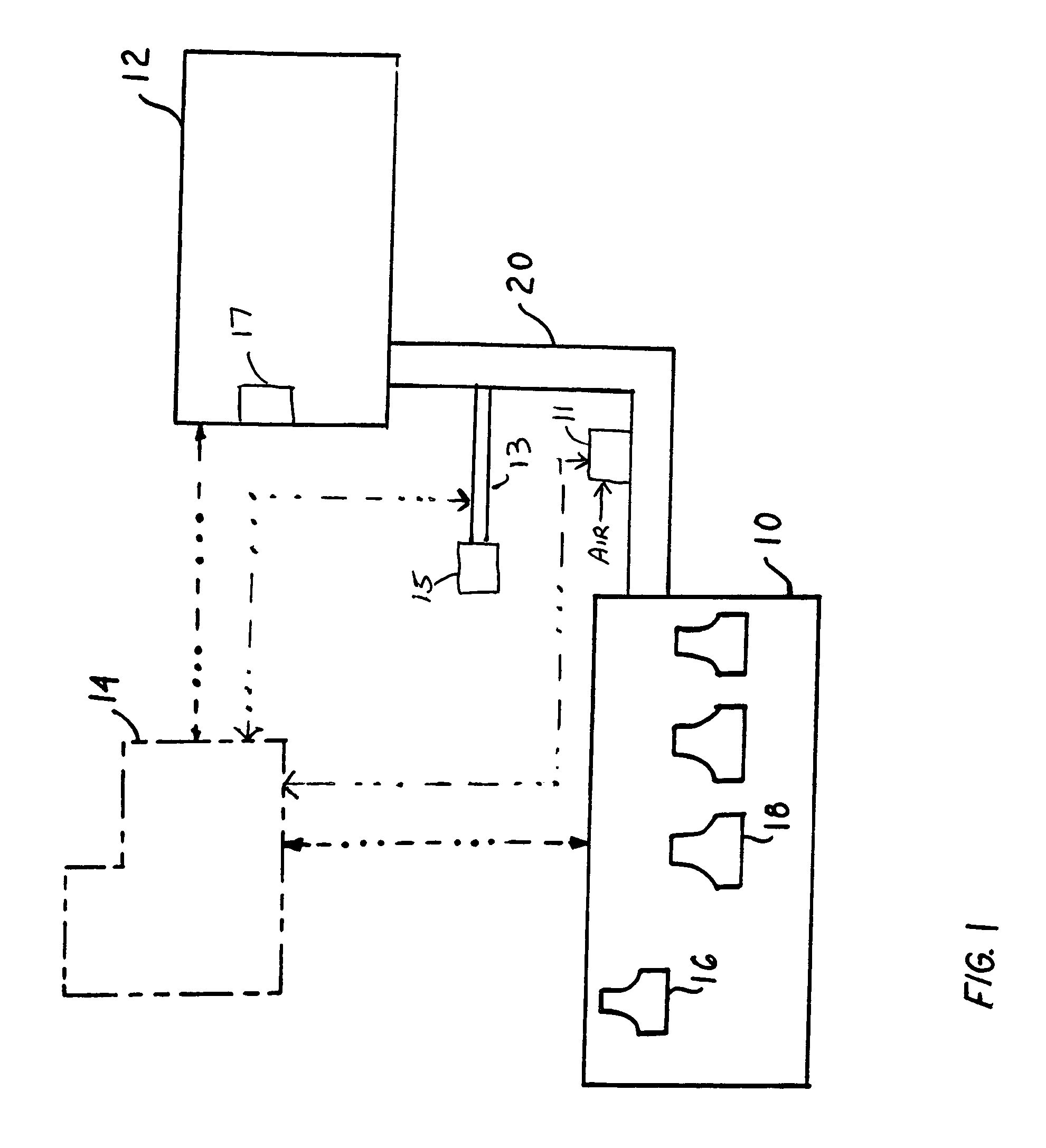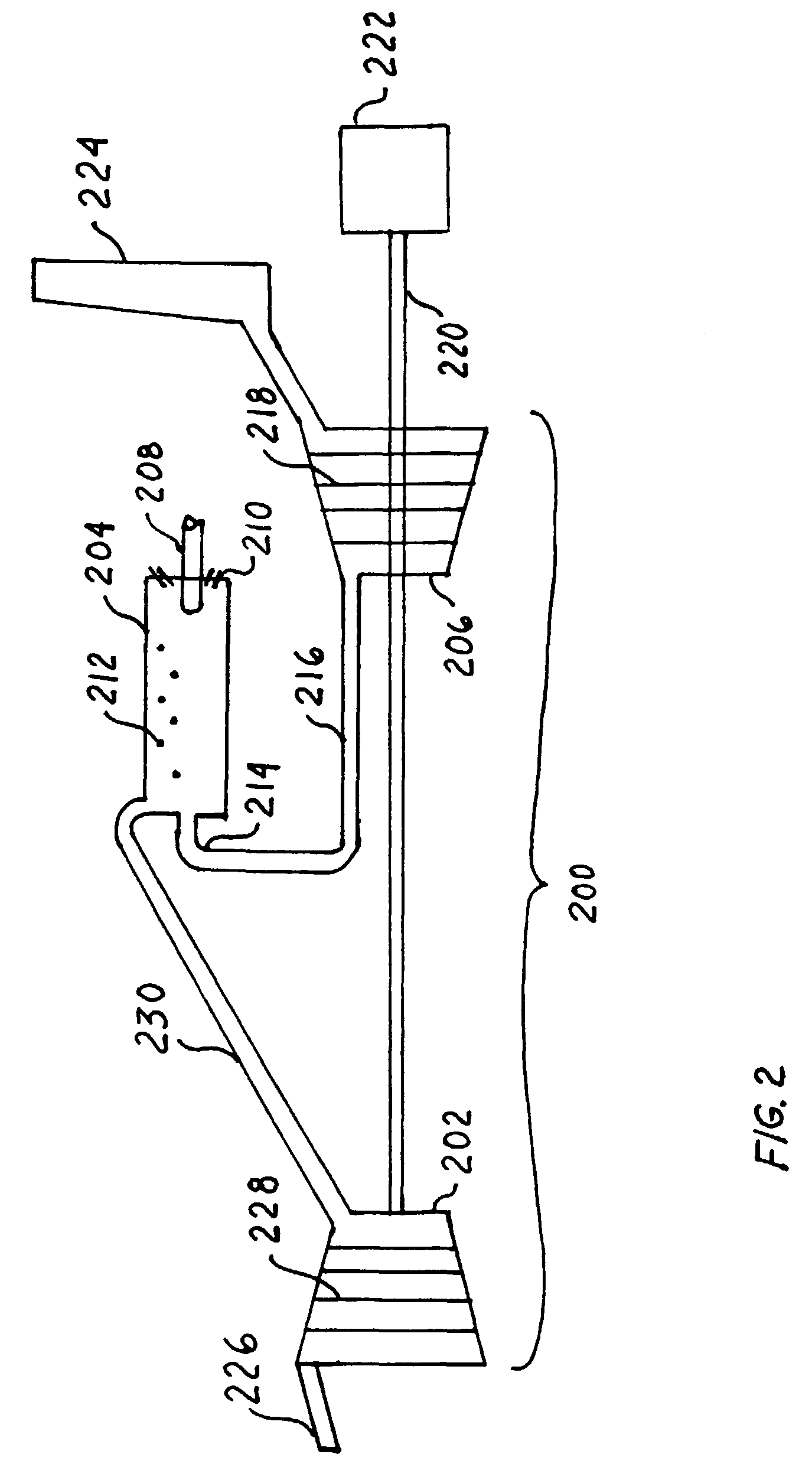Method and apparatus for the destruction of volatile organic compounds
a volatile organic compound and method technology, applied in the direction of combustion control, combustion type, separation process, etc., can solve the problems of high fuel consumption, inability to maintain the high temperature required by the oxidizer, and economic impracticality of condensation compared to capital and operating costs, so as to reduce the emissions of vocs, the effect of low installation cost and low cos
- Summary
- Abstract
- Description
- Claims
- Application Information
AI Technical Summary
Benefits of technology
Problems solved by technology
Method used
Image
Examples
Embodiment Construction
[0021]A detailed description of the method and apparatus of the present invention is now provided with reference initially to FIG. 1, which schematically shows an artificially delimited cumulative volatile organic compounds (VOC) collection area 10, a combined VOC destruction and power generating assembly 12 operable to controllably destroy volatile organic compounds (VOC) fed thereto from the collection area 10, and a process control assembly 14 for controlling the feed of volatile organic compounds (VOC) from the collection area 10 to the combined VOCs destruction and power generating assembly 12. The collection area 10 can comprise a single source of volatile organic compounds (VOCs) such as, for example, a conventional gas collection hood, representatively designated as a hood 16, mounted adjacent an industrial work site at which volatile organic compounds (VOCs) are generated for collecting such volatile organic compounds (VOCs), or the collection area 10 can comprise multiple ...
PUM
| Property | Measurement | Unit |
|---|---|---|
| volatile | aaaaa | aaaaa |
| temperature | aaaaa | aaaaa |
| volatile organic compounds | aaaaa | aaaaa |
Abstract
Description
Claims
Application Information
 Login to View More
Login to View More - R&D
- Intellectual Property
- Life Sciences
- Materials
- Tech Scout
- Unparalleled Data Quality
- Higher Quality Content
- 60% Fewer Hallucinations
Browse by: Latest US Patents, China's latest patents, Technical Efficacy Thesaurus, Application Domain, Technology Topic, Popular Technical Reports.
© 2025 PatSnap. All rights reserved.Legal|Privacy policy|Modern Slavery Act Transparency Statement|Sitemap|About US| Contact US: help@patsnap.com



